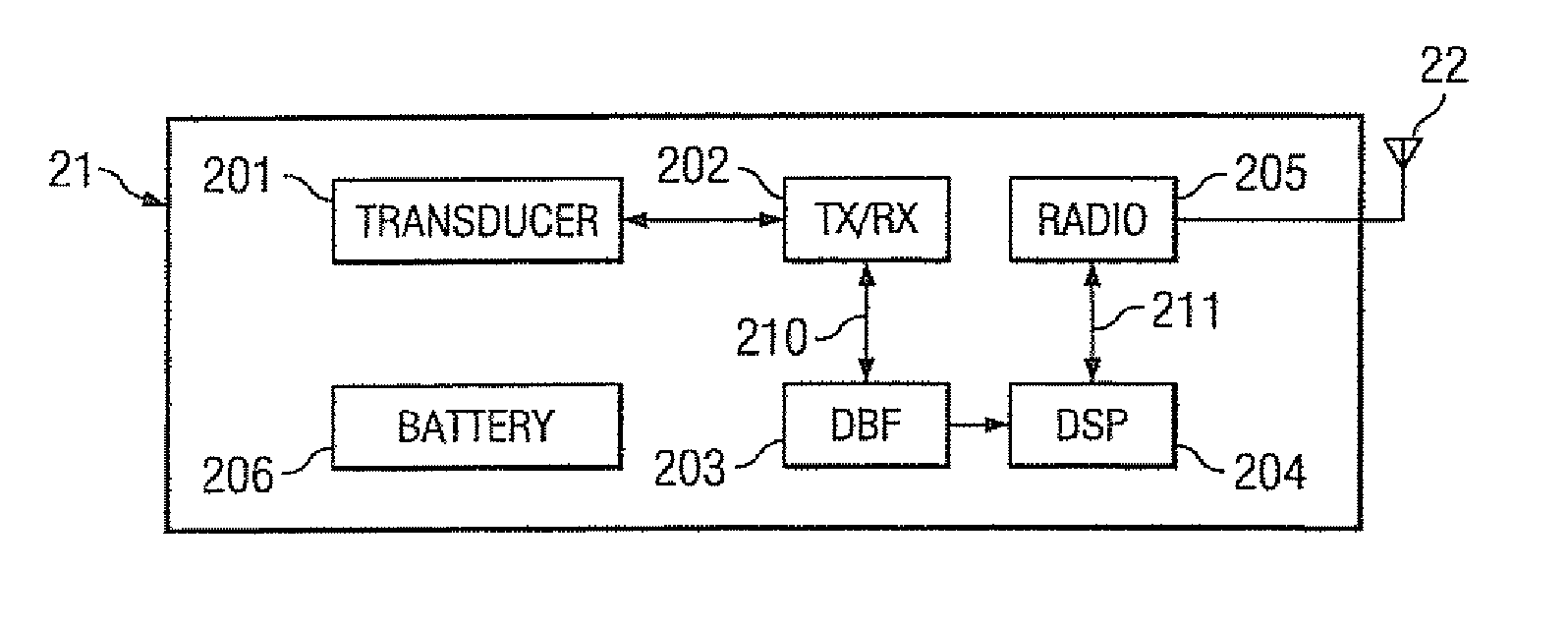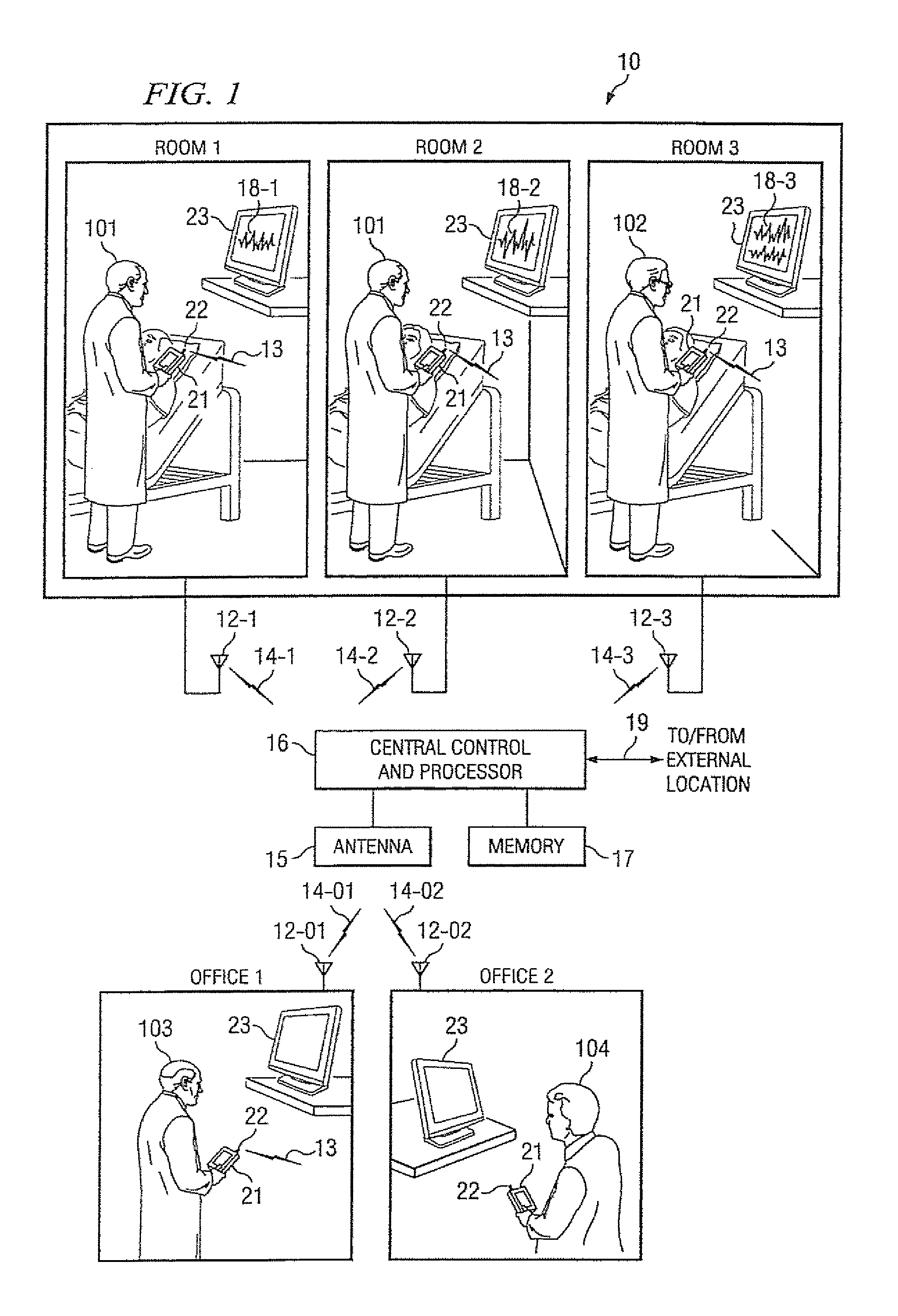Processing of medical signals
a medical signal and processing technology, applied in the field of medical diagnosis and/or treatment systems, can solve the problems of limited network connectivity and storage, lack of the ability to access patient files or other relevant medical information, and new operational problems and user demands, and achieve the effect of facilitating diagnostic decisions
- Summary
- Abstract
- Description
- Claims
- Application Information
AI Technical Summary
Benefits of technology
Problems solved by technology
Method used
Image
Examples
Embodiment Construction
[0016]FIG. 1 shows one embodiment 10 of a ubiquitous system having a high performance back-end processing server, such as a central control and processor 16. Processor 16 is used in conjunction with transducer devices, such as devices 21, which can move from room to room or from office to office as one or more physicians (101-104) moves about. Signals 13 to and from each device 21 are transmitted, for example, via antenna 22 (room 1) to trans / receiver 12-1 and to / from trans receiver 12-1 and server 16 via antenna 15 and transmission path 14-1. Transmission path 14-1 can be wireless or wireline or a combination thereof. Also, receiver (radio access point) 12-1 can serve a plurality of rooms or locations or could serve a particular room, as shown by (12-1, 12-2, 12-3, 12-01, 12-02).
[0017]The processing power of process 16 (which acts as a server) is designed to be capable of simultaneously processing data received from multiple radio access points. In return, if desired, processed sig...
PUM
 Login to View More
Login to View More Abstract
Description
Claims
Application Information
 Login to View More
Login to View More - R&D
- Intellectual Property
- Life Sciences
- Materials
- Tech Scout
- Unparalleled Data Quality
- Higher Quality Content
- 60% Fewer Hallucinations
Browse by: Latest US Patents, China's latest patents, Technical Efficacy Thesaurus, Application Domain, Technology Topic, Popular Technical Reports.
© 2025 PatSnap. All rights reserved.Legal|Privacy policy|Modern Slavery Act Transparency Statement|Sitemap|About US| Contact US: help@patsnap.com



